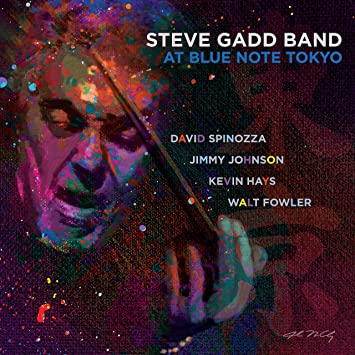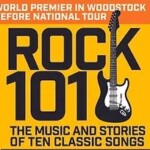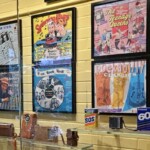Artist: Steve Gadd Band
Album: At Blue Note Tokyo
Label: BFM Jazz
Release Date: 4.2.21

Home is where the pocket is for legendary drummer Steve Gadd, and he rarely leaves it during the cool, groove-oriented live outing At Blue Note Tokyo, a seductive set of soft, neon-lit jazz-fusion recorded there on Dec. 18, 2019. Favoring natural feel over fussy complexity, Gadd takes a backseat on this occasion, venturing out to solo just once with a dizzying, euphoric eruption during the piano rolling, Latin-inspired gyrations of “One Point Five.” The chops are still there.
Responsible for laying down the irresistibly catchy beats of Paul Simon’s “50 Ways to Leave Your Lover,” with his rhythmic complexity having also propelled groundbreaking records by Al Di Meola and Chick Corea, among others, Gadd has nothing left to prove. At Blue Note Tokyo, with its smooth intricacy, but rather subdued energy, gives him an opportunity to recede into the background and play with subtle precision, keeping the Steve Gadd Band’s blissful, relaxed interplay loosely connected and moving with purpose through the low-slung, delightfully bumpy funk of “Walk with Me” and “Rat Race,” as well as the smiling, sleepy-eyed awakening “Doesn’t She Know by Now” and the slowly bubbling, bittersweet sigh “Where’s Earth?”
From their days together in James Taylor’s band, Gadd, bassist Jimmy Johnson and trumpeter Walt Fowler have always had an easy chemistry that allows newcomers like keyboardist Kevin Hays to roam freely. With Michael Landau missing in action, guitarist David Spinozza, one of Gadd’s old collaborators from the ‘70s, fills in ably, adding flecks of his bluesy tonality wherever he can, like when he washes the warm, swaying Spinozza original “Hidden Drive” in champagne ebbs and flows in a dark, sophisticated setting that’s Kind of Blue, with apologies to Miles Davis.
Drawn-out bleeds of Fowler’s trumpet, occasionally muted with resigned melancholy but usually fully open and expressive, pop up at the most opportune moments, often meshing beautifully with Spinozza’s lyrical meditations. In a shuffling “Way Back Home,” however, the instrument flutters like a hummingbird, as Gadd goes with textured brushes instead of sticks in an inspired change of tools. The big revelation, though, is Hays’ ability to flit from tickling the ivories to raining down electric Fender Rhodes showers over such flowering gardens as Fowler’s “Timpanogos.” Night time is the right time to take in all that At Blue Note Tokyo has to offer.
—Peter Lindblad







Be the first to comment!